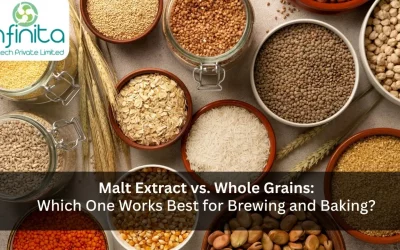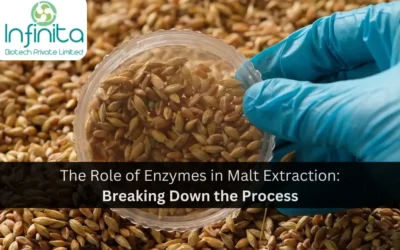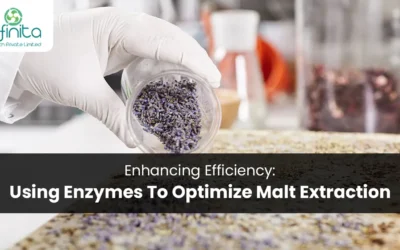An ingredient that often pops up, especially in baking, is malt extract. But what’s the science behind this mysterious ingredient? And why is it such a popular addition to many dishes?
What is Malt Extract?
It’s like the superhero of the baking world, swooping in to save your dishes from blandness and inconsistency. But before we sing its praises, let’s first understand what it is.
The Production of Malt Extract
Malt extract is derived from barley that has undergone a malting process. Picture this: barley grains are soaked in water, allowed to germinate, and then dried in a kiln. This process activates enzymes that convert stored starches into sugars, resulting in a syrupy liquid or dried powder known as malt extract.
Different Types of Malt Extract
Did you know there’s more than one type? Liquid malt extract (LME) is thick and syrupy, while dry malt extract (DME) is, well, dry and powdery. Think of them as siblings with the same roots but different personalities.
The Role of Enzymes
Enzymes play the role of tiny magicians. They break down complex starches into simpler sugars, ensuring your baked goods have that perfect sweet touch.
The Maillard Reaction and Malt Extract
Ever wondered why some baked goods have a beautiful brown crust? That’s the Maillard reaction in action, a chemical reaction between amino acids and reducing sugars. Malt extract accelerates this reaction, ensuring a lovely golden-brown hue to your creations.
Benefits in Cooking and Baking
So, besides its impressive chemistry, what does malt extract bring to the table?
Flavor Enhancement
Malt extract is like that secret ingredient in your grandma’s pie – it adds a distinct, malty flavor that’s hard to resist. It’s the difference between a good dish and a “wow, what’s in this?” dish.
Texture and Consistency
Want that perfectly chewy cookie or that bread with a crispy crust? Thank malt extract for that. It works wonders in moisture retention and improves the texture of baked goods.
Natural Sweetening Agent
Instead of using refined sugars, malt extract acts as a natural sweetener, offering a nuanced depth to the sweetness in your dishes.
Popular Uses in Recipes
From bread to beers and even candies, malt extract wears many hats. It’s the unsung hero in bagels, lending them their signature taste and texture. It also plays a pivotal role in brewing, adding body and flavor to beers.
Comparing with Other Ingredients
Think of malt extract as an artist with its unique brush strokes. While ingredients like honey or maple syrup have their charm, malt extract offers a different palette of flavors and textures to play with.
Tips for Using Malt Extract in Your Kitchen
Always store in a cool, dry place. Use it sparingly; a little goes a long way. Experiment! From sauces to desserts, its versatility knows no bounds. Conclusion
Malt extract is more than just an ingredient; it’s a game-changer. By understanding its science and potential, you can elevate your culinary creations to new heights. So, the next time you spot malt extract on a recipe card, you’ll know just what magic awaits.
FAQs
What can I substitute for malt extract in a recipe?
While you can use honey or molasses, remember that each has its unique flavor profile.
Is malt extract gluten-free?
Most malt extracts are derived from barley, which contains gluten. However, gluten-free versions are available.
How do I measure malt extract?
For liquid malt, a sticky syrup, oiling your measuring tool can help. For dry malt, measure it just like flour.
Why is my malt extract thick and hard to pour?
Liquid malt extract is naturally viscous. Warming it slightly makes it easier to handle.







